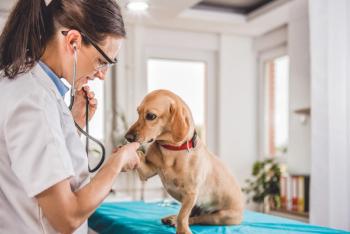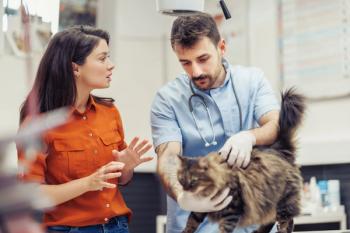
Prepare your veterinary team for new equipment
Give your team an outlet to express concerns and the jolt they need to embrace any new equipment purchase in your veterinary practice.
Last month, we looked at financing in this three-part series all about maximizing your use of the top three pieces of equipment you said you were adding to your practice (according to the 2013 Veterinary Economics Business Issues Survey). This month, we'll take a look at how to fire up your team about the new services.
You did it. You took the plunge and now you're the proud owner of a therapeutic laser, digital radiography or another new piece of equipment. So what now? How do you make the most of this big honking investment and keep it from collecting dust in the back of the clinic?
Spark your team's interest
First, it's essential to educate your team members and get them on board with the new service, says Dr. Karen Felsted, CPA, MS, CVPM, president of Felsted Veterinary Consulting in Dallas. She says if you're talking up digital radiography to pet owners, you want your team to back you up when clients whisper to them, "Is it really that much better?"
This is where your team meeting comes into play. (See the sidebar "Run a team meeting all about a new service" for a sample meeting agenda.) Dr. Felsted says in order to ensure staff compliance, laser in on how each piece of equipment can benefit pets and pet owners. For example, you could tell your team, "With digital radiography, the images are going to be much clearer and sharper—this will help us more clearly identify problem areas and make a better diagnosis. The more accurate the diagnosis, the easier it will be to present treatment options to our veterinary clients."
"If they can't see the benefits, then it's just one more hassle in their workday," Dr. Felsted says.
Felsted also says that hands-on training is a must—depending on your team, you may want to conduct several of these intro sessions.
"People may be nervous about using a brand-new, expensive piece of equipment," Dr. Felsted says. "Remember, the simpler you can make it for the team, the more buy-in you're going to get."
Does your practice have a clinic pet? She says you can borrow him as a "sample patient" and carefully demonstrate how the equipment works on a real animal. Or better yet, ask your team whether any of their own pets are in need of one of your new services.
"If someone has a dog that's been limping, bring him in so the team can practice taking digital radiographs," Felsted says.
Veterinary Economics Editorial Advisory Board Member Dr. Jeff Rothstein, MBA, said team members at his hospital had no trouble embracing the new digital radiography machine—in fact, it was at the top of their wish list. They no longer have to ask, "Hey, are these X-rays good enough?" Not only does it save all of them time, but there's also a natural safety component that comes with upgraded equipment.
"Digital radiography is something the staff loves because they're the ones wrestling with the animals," Dr. Rothstein says, president of the Progressive Pet Animal Hospitals and Management Group in Michigan. "If you have a patient you're restraining, that extra time you waste hassling with old equipment really plays into the mix."
Beware potential equipment hazards
Unfortunately, with these new machines can come preset problems that Dr. Michael Petty, owner of Arbor Pointe Veterinary Hospital in Canton, Mich., says to watch out for. Dr. Petty practices near Dr. Rothstein and his team acquired a therapeutic laser about four years ago. Dr. Petty warns that some equipment companies preprogram the machine so all you have to do is press a button to treat each ailment. He says, although the factory presets might be correct for some cases, one-size-fits-all treatment is never the best option. Instead, Dr. Petty strongly suggests plugging in your own time limits and settings based on each individual patient.
"You don't want to cookbook your way through laser therapy," Dr. Petty says. "As new data comes out, you want to be able to adjust the laser's settings so that you can give your patient the best possible care based on the best research available. Clients are paying you because you're the expert."
Plus, he says learning about your laser and the conditions it can or cannot treat will increase your team's confidence, which in turn will come across to clients as you discuss treatment options. To make mastering laser therapy a bit more convenient for his team, Dr. Petty created a spreadsheet listing some of the most common muscle trigger points. So when he instructs his three technicians to use eight joules on each spot on a patient, they can refer to the checklist and they know which areas to cover with the laser. If you follow Dr. Petty's strategy, then you won't be dealing with the new equipment very often once your staff members are trained and comfortable manning the controls.
"I barely touch the laser myself," Dr. Petty says. "I utilize my technicians very heavily. They're trained on many tasks a lot of veterinarians aren't willing to delegate."
Besides saving your team time and stress, another bonus that comes with a big equipment purchase? You immediately become more marketable to potential employees.
"When you're hiring new staff, you start to look outdated if you don't have it," Dr. Rothstein says.
Now that the light bulb has gone on for team members, next month you'll learn how to best market your equipment to current and potential clients.
Newsletter
From exam room tips to practice management insights, get trusted veterinary news delivered straight to your inbox—subscribe to dvm360.






